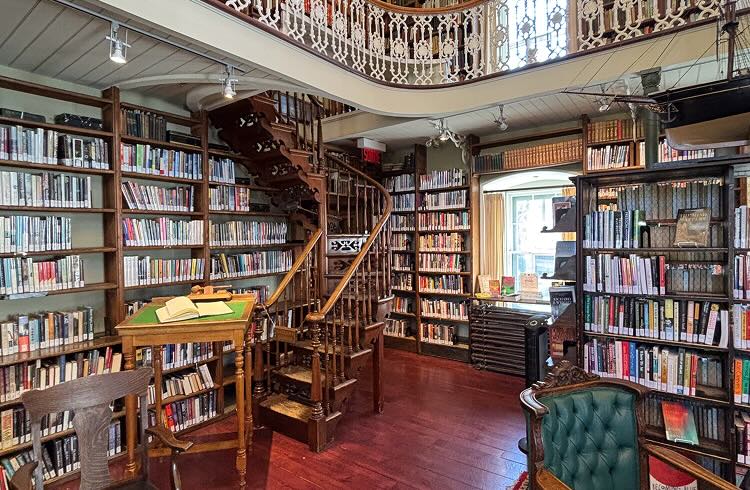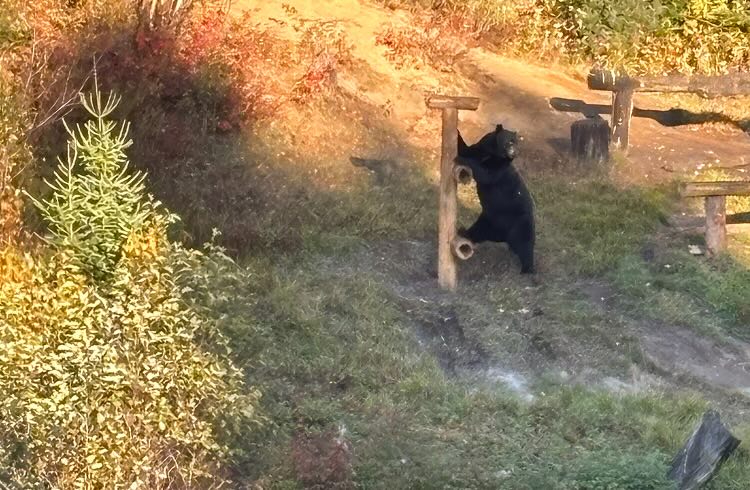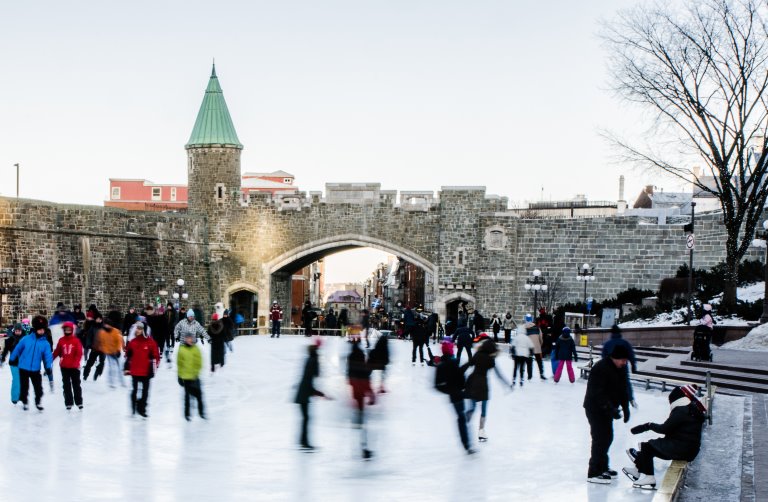A Three-Night Adventure Through Québec
Farms, Falls, Whales, and Cobblestones
 Photo © Sarah Roman
Photo © Sarah Roman
There’s a certain magic about Québec—a blend of old-world charm and wild, untamed nature. My husband and I spent three nights exploring Québec City and beyond, balancing farm visits, scenic drives, and cultural walks through cobblestone streets that made us feel like we’d crossed the Atlantic.
Day One: Rainy Farms and Fancy Cocktails
Our first full day in Québec began under pouring rain—the kind that soaks you through your raincoat and makes even short walks feel like endurance tests. But we refused to let the weather stop us. We started at Montmorency Falls, just a short drive from Québec City. Even through the mist, the 272-foot cascade—taller than Niagara—was beautiful. We had umbrellas and the view could still be enjoyed through the rain.
Next, we headed to Île d’Orléans, an agricultural island known for its orchards, vineyards, and local producers. Our first stop: Cidrerie Verger Bilodeau, where we sampled their famous ice cider and sparkling cider—sweet, crisp, and perfectly suited for a gray day. Then we continued to Vignoble Ste-Pétronille, a boutique winery that has beautiful views. Their wines are small-batch and interesting (meaning, they are different than what you’d find in the US), and sipping them while looking out over the misty river felt like we’d beaten the weather.
By afternoon, the rain and driving had caught up to us, so we called the farm adventures off and headed into Old Québec. Determined to dry off in style, we stopped at Vieux Carré, a sophisticated cocktail bar where we indulged in some (very expensive) drinks that made us feel instantly more dignified. Dinner was a quick slice of pizza nearby before calling it a night.

Day Two: Whales and Bears in Tadoussac
The next morning, the sun came out and so did our sense of adventure. We left early for Tadoussac, about a four-hour drive northeast, including a short ferry crossing. The ferry runs every 20 minutes or so, but the line can get long, so plan extra time.
Tadoussac is famous for whale watching, as several species—including belugas, minkes, and blue whales—migrate through the St. Lawrence River. We joined a whale-watching cruise from Baie-Sainte-Catherine, choosing a covered boat since open-air ones can be chilly even on sunny days. The guides were excellent, mostly speaking French but always translating for English speakers. We spotted one whale that surfaced several times before disappearing into the blue depths. For those who get seasick easily (me, included) know that the river is calm and you should be okay if it’s not too stormy.
Afterward, we grabbed a drink and snack in Baie-Sainte-Catherine, a small, peaceful town overlooking the river. If we’d known how beautiful it was, we would have stayed overnight. Locals told us that it’s sometimes possible to see whales right from the shore and we would have loved to try had we had the time.
At sunset, we joined a black bear viewing tour nearby. The company provides an elevated platform overlooking the forest, where the bears wander in to forage for food. Watching them felt like being in a live nature documentary. Over the course of an hour, we saw two or three bears, each one emerging from the shadows as the forest fell silent.
We returned to Baie-Sainte-Catherine for dinner, which turned out to be a smart move. The restaurants are few and far between on the long drive back to Québec City, and this town offers a handful of cozy spots with hearty food and river views. Pro tip: fill up your gas tank before leaving, as stations are scarce along the route back.

Day Three: Cobblestones, Castles, and Culture
Our final day was devoted to Old Québec, a UNESCO World Heritage site that feels like a slice of Europe perched on the cliffs of North America. The old town’s cobblestone streets, stone buildings, and sidewalk cafés make it easy to see why this is one of Canada’s most photographed cities.
We strolled along the Dufferin Terrace, taking the obligatory photo with the iconic Fairmont Le Château Frontenac, which is often called the most photographed hotel in the world. From there, we wandered through the Plains of Abraham, a vast park that was once the site of the pivotal 1759 battle between the British and the French. Today, it’s a serene green space perfect for picnics and long walks.
Next, we stopped at the Morrin Centre, a hidden gem for book lovers. Once a notorious prison, it’s now home to one of the most beautiful libraries in Canada. The English-language shelves, spiral staircases, and sunlit reading rooms are straight out of a period film and worth the small admission fee.
After giving our feet a break (and sampling more local cider at a nearby pub), we walked to Bois-de-Coulonge Park, another scenic spot filled with gardens, fountains, and walking trails that overlook the river.
We capped off our trip with dinner at Chez Boulay, a celebrated Québec City restaurant inspired by the boreal forest. Every dish felt rooted in the region’s wild ingredients—think spruce tips, berries, and freshwater fish. The trout carpaccio was a highlight, beautifully presented and full of delicate, woodsy flavors.
Final Thoughts
We crossed into Canada from Maine, and the border crossing was simple—no lines at all, though we did go at night. During our stay, we found Canadians to be incredibly warm and welcoming, often switching to English without hesitation and going out of their way to make us feel at home.
In hindsight, three days in Québec City felt like the bare minimum. You could easily spend a week exploring the city’s museums, historic sites, and nearby countryside. But our itinerary—a mix of rural adventures and urban exploration—gave us a satisfying taste of both sides of Québec’s personality.
Between sipping cider on a rainy farm day, spotting whales on the St. Lawrence, and strolling centuries-old streets, we left feeling that Québec isn’t just a destination; it’s an experience that lingers.
Travel Tip: For future visitors, bring layers, book rural experiences in advance, and leave time for spontaneous detours—you never know when you’ll stumble upon a hidden vineyard, a library that steals your heart, or a bear wandering through the trees.
Related articles
Simple and flexible travel insurance
You can buy at home or while traveling, and claim online from anywhere in the world. With 150+ adventure activities covered and 24/7 emergency assistance.
Get a quote

No Comments